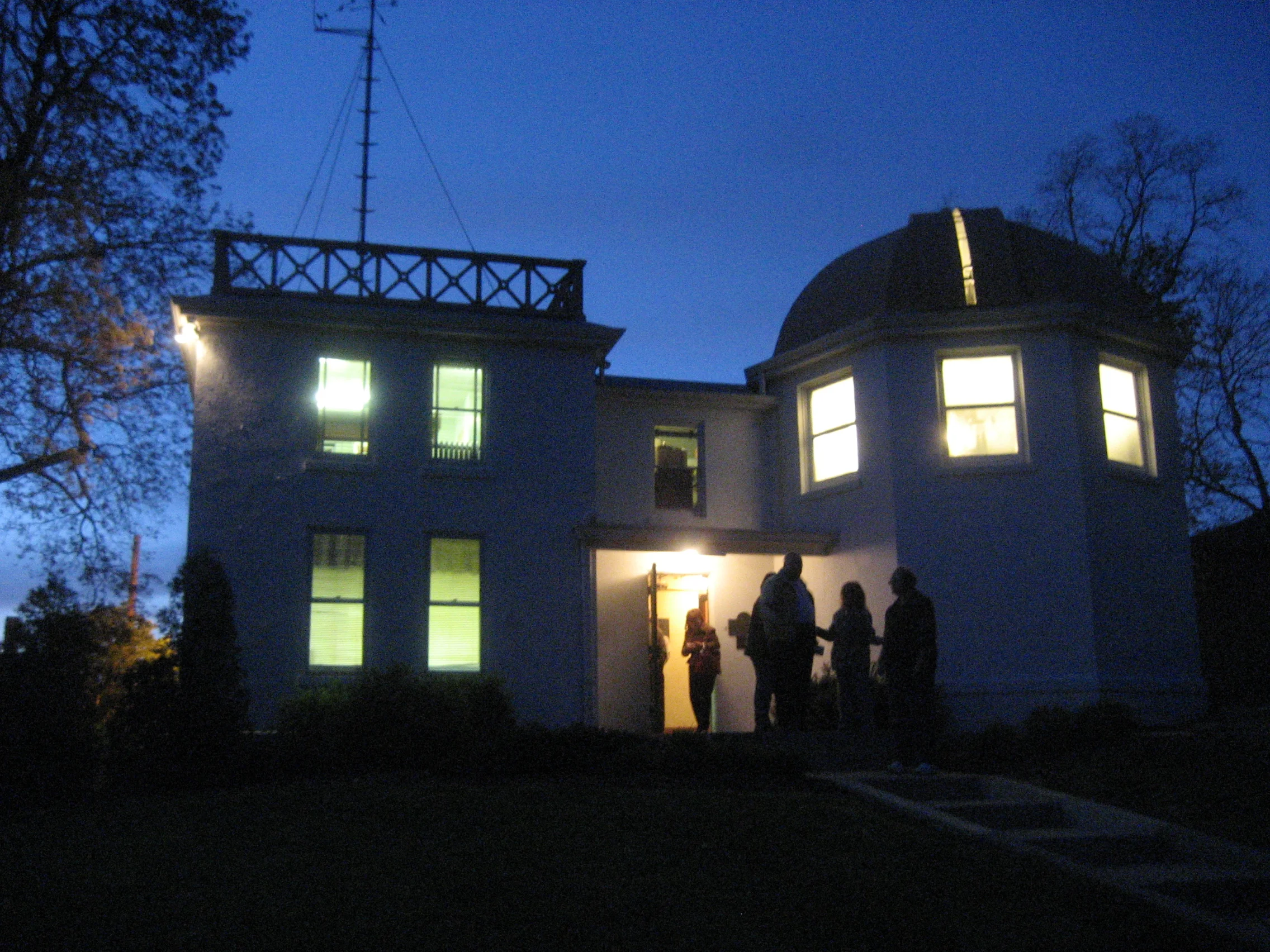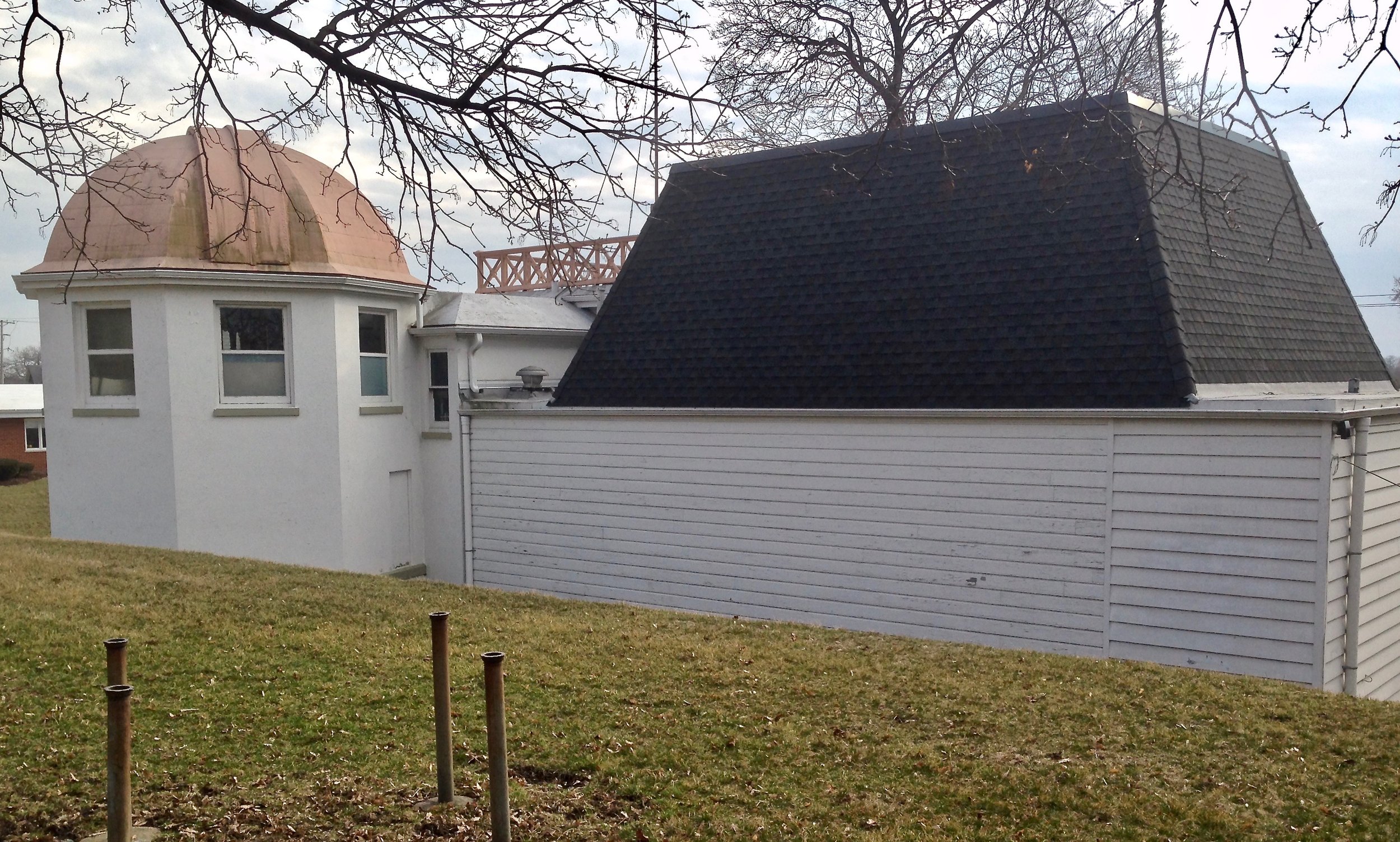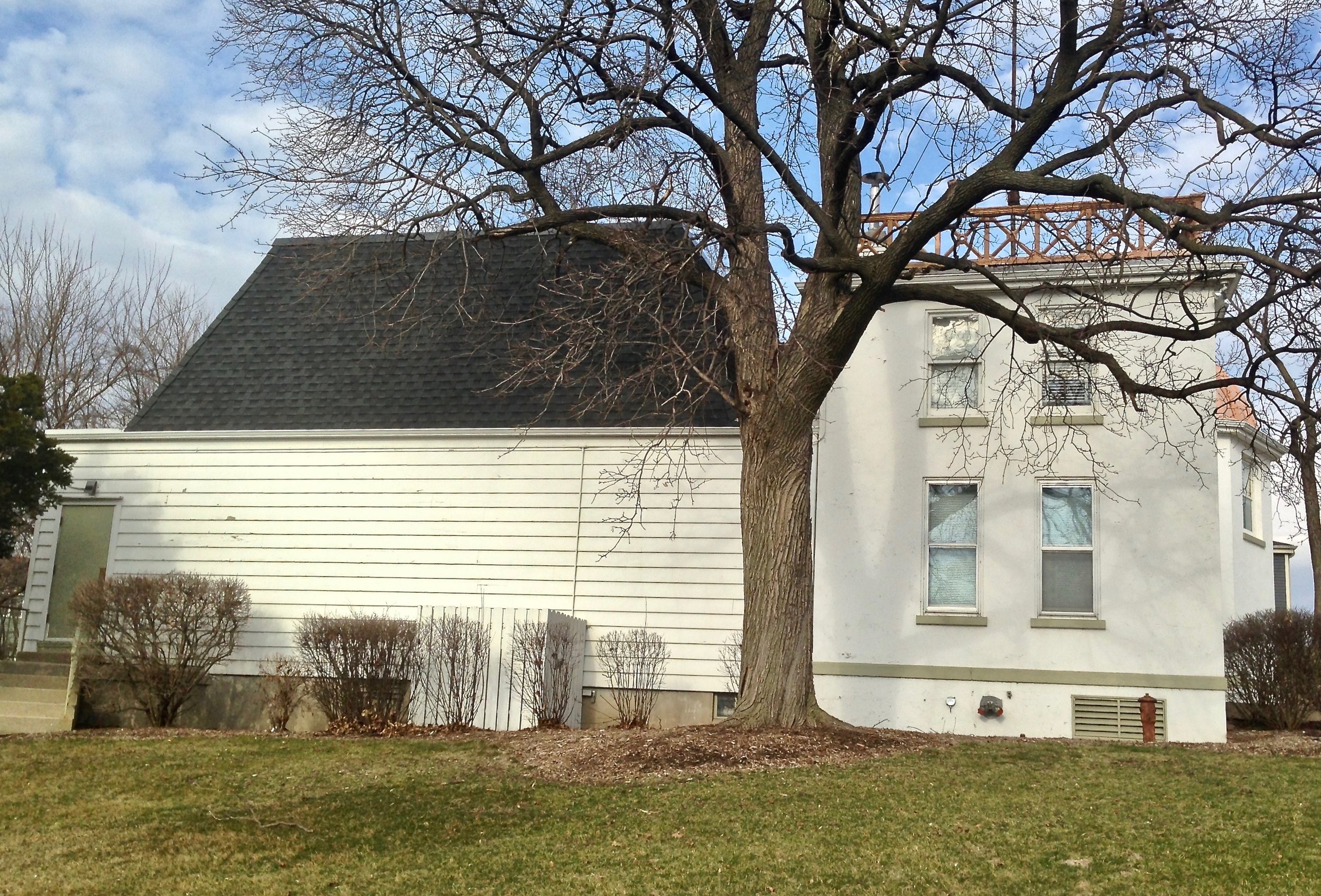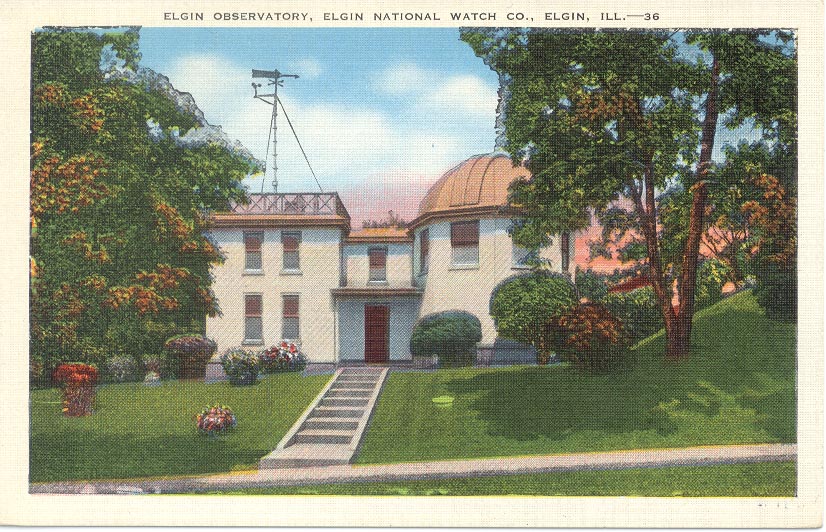312 WATCH STREET
HISTORIC SIGNIFICANCE
By the early 1900s, the Elgin National Watch Factory was producing the most watch movements from a single company in America, at roughly 600,000 in 1901. The seemingly ever-increasing popularity of Elgin watches demanded a high level of quality. At roughly the same time, this fact was highlighted by the increase in train travel and trains carrying consumer goods across the country, necessitating more uniform times over the miles to keep trains and people on similar standards.
Largely, the Elgin National Watch Factory wanted to meet their quality standards, but they ended up meeting both the above-mentioned needs in building the Elgin National Watch Factory Observatory in 1909. Officially opening in 1910, with the help of George E. Hunter and W.W. Payne, it served as the preeminent standard to serve the needs of the Elgin National Watch Company when it came to setting the time. Using instruments that observed the stars, the observatory could calculate extremely accurate times for the Watch Company and others to use with confidence.
The land for the observatory was picked specifically for its location. Sitting at the corner of Watch Street and Raymond Street, in what is today the Elgin National Watch District Historic District, the site was chosen because it was a sloped site, making it one of the higher areas in the neighborhood. Additionally, the gravel base deep below the surface provided vibration dampening qualities absolutely necessary to ensuring that the machines used in association with the telescopes were not disturbed during their processes. Lastly, while the Watch Factory no longer stands, the observatory was built to be as close to that site as possible, as it was once just a few blocks from 312 Watch Street.
In 1960, the site and observatory were deeded to local school district, U-46. Three years later, in 1963, a planetarium was added to the rear to help further educate classes of students.
ARCHITECTURAL SIGNIFICANCE
312 Watch Street was designed by architect George Hunter and completed in 1910 in the Classical Revival style. It is a two-story building with a concrete foundation and concrete walls. Some elements of the Classical Revival style that showcase themselves here include the cornice-line balustrade, the dome – here in the form of the retracting roof for the telescope – long windows and the polygonal projection which is the section below the domed roof.
Designed by Elgin architect, George Hunter, the Watch Factory Observatory was designated a local landmark and listed on the National Register of Historic Places in 1994.
Sources: 1989 Heritage Plaque Application; Audio: TextAloud






